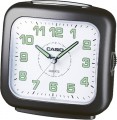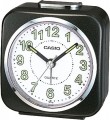Clock face shape. This parameter affects only the appearance of the device and is practically not related to the functionality. Therefore, you can choose a watch according to the shape of the dial only for aesthetic reasons.
Note that although the traditional shape for a pointer dial (see “Dial Type”) is
round or
rounded (oval), this is not limited to
square /
rectangular options. With digital, the situation is similar: in addition to the classics in the form of a rectangle, other forms are also used.
Power supply methods provided in the design of radio receivers and table clocks.
-
Batteries. Powered by standard replaceable batteries (
AA,
AAA,
type C,
LR44,
PP3, etc.). There are two main advantages to this diet. Firstly, a shrunken element can be quickly replaced; for this, of course, you need to have fresh batteries in stock, but it’s easy to take care of this in advance. Secondly, consumer devices are independent of outlets; this allows you to install them on almost any suitable surface, easily move from place to place, without worrying about the length and placement of the mains cable. Batteries, of course, need to be purchased separately, which slightly increases spending. However, many replacement batteries are also available as rechargeable batteries. Thanks to all this, battery-powered models are very popular today.
-
Network. Powered by a standard 230 V network. On the one hand, this option eliminates the hassle of batteries, and on the other hand, connecting to the network is associated with a number of inconveniences: the power cord limits the ability to install a radio or clock in places where there are sockets nearby, moreover the device may interfere or simply not fit into the overall environment. Mai
...ns power in watches is quite rare in its pure form - much more often it is used as a fallback option for battery-powered models: if the situation allows, you can plug the watch into an outlet and not waste the charge.
- Battery. Powered by an original battery that is not related to standard sizes. Like the batteries described above, this option provides the device with autonomy. However, the key difference is that the battery, as a rule, does not provide for quick replacement: a non-standard format makes it difficult to purchase a spare battery, and more often than not, it is generally made non-removable. Therefore, the main, if not the only, option for discharging is charging, which requires a connection to the network and takes quite a long time. As a result, rechargeable batteries are considered a less suitable power option than replacement batteries and are rarely used.
